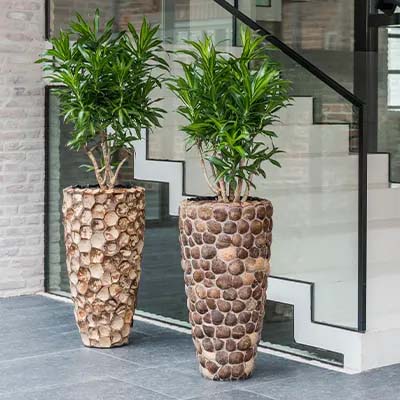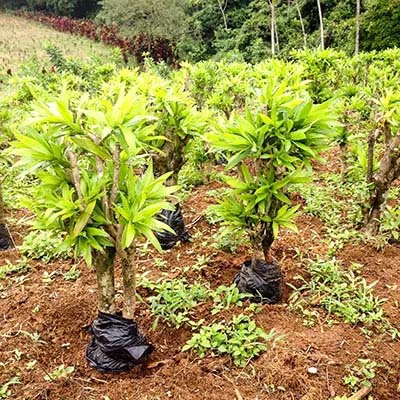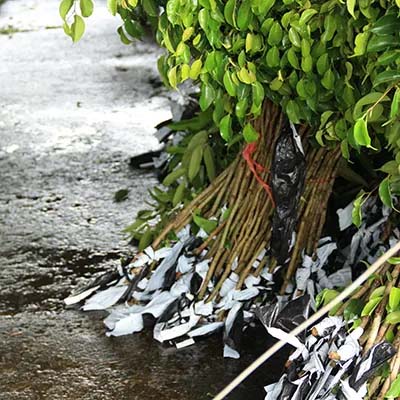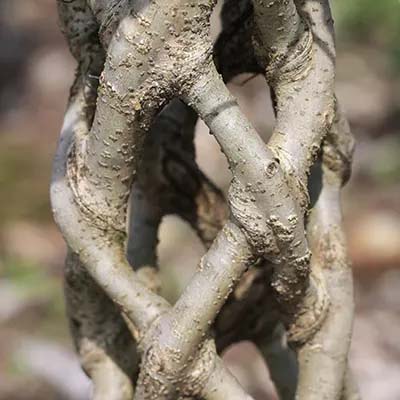
From Central America to a pot near you – the journey of an office plant
-
12 November 2021
Ever wondered where that gorgeous Dracaena in your meeting room came from? Well, the answer is quite a long way from your workplace!
It’s probably no surprise that the office plants we know and love don’t tend to me native to our shores. In fact, most only stand a chance of surviving indoors in the UK, and even then only after being acclimatised to our lower light levels.

This means that house and office plants start their lives far away, in more tropical climes. For one of our plant suppliers, Nieuwkoop Europe B.V, most plants begin their lives in the Central American country of Costa Rica.
This small, but densely forested country is a powerhouse in the plant export world and nurtures a vast range of specimens ready to ship overseas, often to more temperature climates.
Costa Rica benefits from rich volcanic soil and a tropical climate which makes it a perfect place to grow tropical plants, as it’s dense and biodiverse rainforests can attest. Tens of thousands of plant species thrive across the country, making it a botanist’s paradise.
As a wildlife and plant enthusiast, Costa Rica was a perfect choice for my honeymoon and I was blown away by the richness of its natural life, cultivated by such a large variety of landscapes for a relatively small country. From Caribbean and Pacific coastlines, cloud and rainforests, volcanoes, mountains and lowlands.
It’s no wonder tropical plants cultivated here are of such good quality.
An army of mother plants
Nieuwkoop works with 25 Costa Rican nurseries, all selected for their extensive expertise in their field and who work hard to ensure the planting they export is of the highest quality before it is shipped off.
A working relationship that stretches back around 35 years, Nieuwkoop makes regular visits to their Costa Rican suppliers (pandemics notwithstanding), to inspect planting and evaluate the production process.
An office or house plant’s early life has a huge impact on how it thrives later on (rather like humans), so it is important to ensure plants are set up for a strong and healthy life when they finally make it to their UK home.
The suppliers have an army of ‘mother plants’ from which new plants are created. New shoots from the mother plant are cut when they are developed enough and carefully nurtured to encourage roots to form. Once established in their pots, they are ready for shipping.
Air layering
This might sound straightforward enough but getting your indoor plant to develop once separated from its ‘mother’ is a delicate process. Take the Pleomele reflexa, otherwise known as Dracaena reflexa.
There are various ways to encourage cuttings to grow roots and become their own plant, but air layering is one of the most effective for plants like the Pleomele.
Air layering involves making an angled cut in the stem of the mother plant, where you plan to take a cutting. This cut is then treated with a hormone compound, covered in moss or soil and bound with foil or another covering to keep the area moist and warm.
When roots have formed at the cut, the stem can be separated from the mother plant and planted up. A number of cuttings can be taken from one mother Pleomele at a time.

Onwards and upwards
These new plants are then allowed to establish and grow over a few years in the grower’s fields. Branched varieties are regularly pruned to ensure they form a good branched structural shape.
By this time, the plant’s roots are often too large to fit into an indoor plant pot- not ideal for office or home planting, so further air layering is required, this time at the base of the plant’s trunk, to create new roots for the whole plant.
Once these new roots have appeared, the plant can be cut away from the old roots, ready for the next stage.
Dim the lights
Next, the Pleomele come into shade tunnels for between 4 to 6 weeks, where heat and humidity remain high, but where shade covers creates lower light levels than out in the field.
This process starts the acclimatisation process, allows the plants to harden off and also creates optimal conditions for growing strong roots. It also starts to prepare them for their ultimate destination, in northern European homes, shopping centres, offices and a whole host of other indoor spaces where we like to put plants.
As soon as the plants are strong enough, they are transported to the Netherlands by sea, which takes between 2-3 weeks.
Braids and spirals
The Ficus is another specimen which Nieuwkoop sources from Costa Rica. Available as small, ornate trees or taller focal points, they are a popular choice for larger workspaces.
Ficus offer an extra aesthetic touch: their stems can come braided or in a spiral, a process which starts early on in the tree’s life. The cuttings for these specimens either go straight into the soil to grow larger plants, a process of three to eight years, or into propagating pots to contain growth and form smaller trees, taking just six to nine weeks to get good root establishment.

Spiral stems are formed positioning a bamboo support pillar between the stems of two separate Ficus trees. The stems are trained to curl around the bamboo as they grow, forming a spiral shape. Over time, the bamboo collapses, leaving just the elegant, intertwined stems.
Braided stems are formed with a different technique. For this braided look, the stems of 3 or more Ficus are bent to create the desired shape. This causes small cracks to appear at bend points, which are also the points at which the stems cross.

As the cracks repair themselves over time, the braided stems bind to each other where they meet, forming a strong frame.
On to Holland
The Netherlands is the main supplier of indoor plants for Europe and it is here that plant providers such as Nieuwkoop are based. The plants are inspected, quarantined and moved into the greenhouse for 3 – 6 months to complete the acclimatisation process and prepare them for the lower Northern European light levels.
Again, these Dutch plant suppliers have extensive knowledge on planting, and we trust them to provide us with thriving, great-looking plants.
When we can (and, of course, it has been tricky of late), we visit the Dutch greenhouses to see what’s growing and get fresh inspiration from the miles and miles of indoor plants. If you want to hit your step count goals, I recommend a tour of a Dutch greenhouse!
So, there you have it, the life of a tropical office or house plant before it reaches you, its origins in a land far away. All in all, this process takes several years, depending on the specimen, but quality of course takes time and, as they say: all good things to those who wait!
With thanks to Niuewkoop Europe BV for their insights on Costa Rican plant growers.
Fancy trying your hand at air layering? Click here for the RHS’s handy guide.